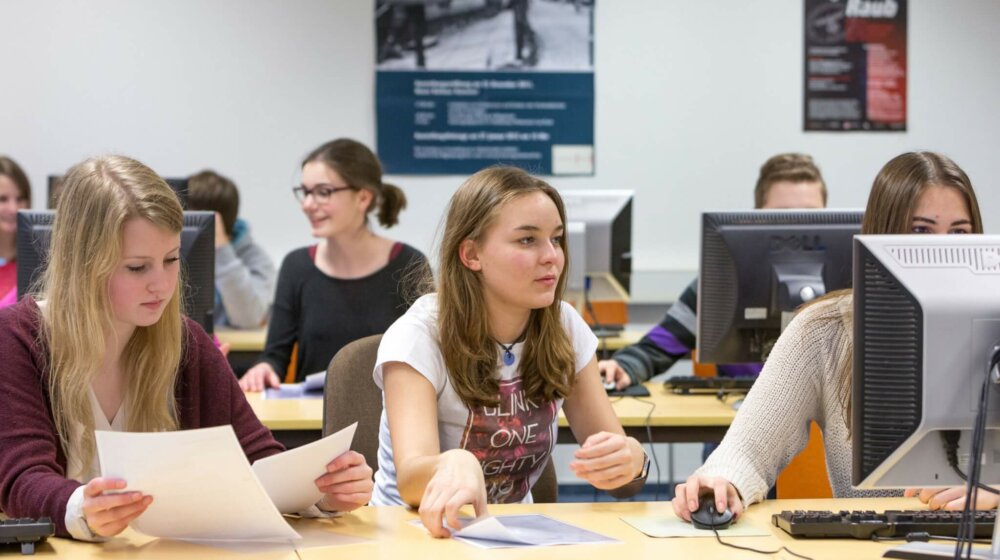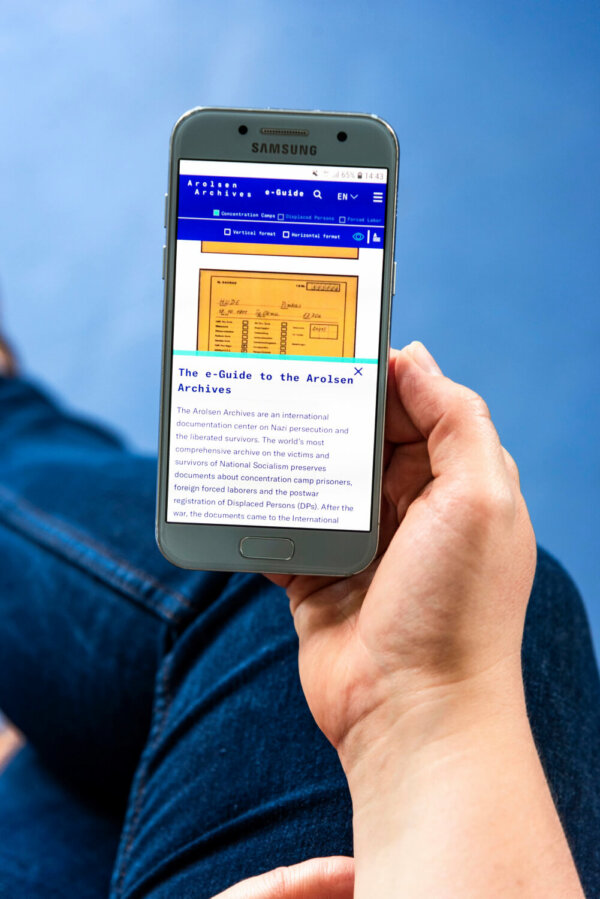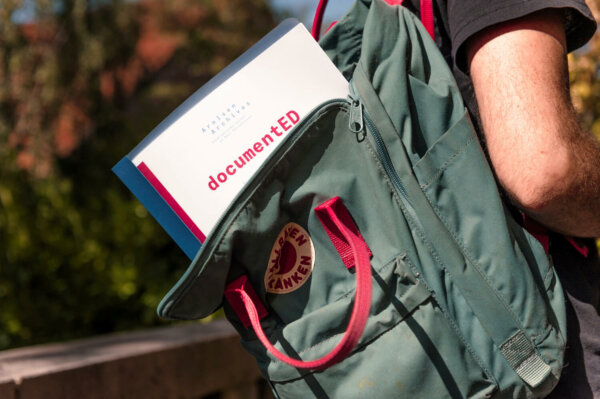documentED:
Material for visits
to memorial sites

Many young people do not know much about Nazi persecution – despite the fact that learning about National Socialism is firmly anchored in school curricula in Germany and many other countries. Studies show that even those students who have visited a former concentration camp often remember little about it. The Arolsen Archives support educators is by providing materials dedicated to the fate of individual concentration camp prisoners for trips to memorial sites.
Our project documentED offers packages of learning materials (toolkits) for visits to various concentration camp memorials in Germany and other countries. The toolkits include selected documents from the Arolsen Archives, these are primarily documents that were produced by the Nazis for registering prisoners in the concentration camp in question. Working with these source materials ensures that students are better equipped with previous knowledge when they visit the memorial. We provide information for teachers on how to use the toolkit in the classroom and include examples of work assignments. In addition, every toolkit contains suggestions for remembrance projects that students can organize on their own after visiting a memorial site.
»The earlier we acquaint children of different ages with the existence of these files and their contents, the easier it will be to teach the history of the Holocaust and other mass killings. Every new generation of children must be familiarized with this terrible past and its horrendous consequences.«
Thomas Buergenthal, Holocaust survivor
Dealing with sources critically
documentED uses individual fates to lead on to an understanding of the broader context. Why did the National Socialists imprison people? What function did the concentration camps have, and how were they organized within the Nazi system of terror?


Relevant links and excerpts from the e-Guide of the Arolsen Archives are included in the toolkits so that the sources can be understood. This makes it possible for the students to find answers to many of the questions thrown up by documents of this kind, which were created by perpetrators. By doing their own research, they can understand how the documents need to be read and what they mean in the context of their time – it also teaches them how to learn independently and how to deal critically with sources.
Relating learning to life
If required, we are happy to provide an individualized toolkit for your learling group. Because of the sheer number of documents on individual victims of Nazi persecution that are held in the Arolsen Archives, it is often possible to introduce an aspect which students can relate to directly. Documents about concentration camp inmates who came from the same town or region as the group or who were about the same age as them when they were imprisoned are very helpful here. Students can then establish a direct connection between the things they are learning about and the circumstances of their own lives. This approach often inspires students to take a deeper interest in the topic as it makes the abstract facts in history books easier to grasp.

»When schoolchildren study documents from the Nazi era and learn about the personal fates of concentration camp inmates as part of the documentED project, the horror of the Holocaust becomes more comprehensible. documentED not only encourages empathy, but also makes the memory of the Shoah more tangible. The project also helps immunize young people against antisemitism, racism, and hatred.«
Dr. Josef Schuster, President of the Central Council of Jews in Germany
After the visit: ideas for your own projects
It is just as important to encourage groups to plan a project of their own after visiting a memorial as it is to give them adequate preparation before the trip. This is why documentED also includes suggestions for getting actively involved and taking a stand. Manageable and doable – these are the watchwords. Social media and digital formats offer plenty of possibilities nowadays, but a traditional »analog« poster exhibition can also be a good idea. There are many other options too, of course, including more elaborate creative projects for after-school clubs, for example. If you send us photos, audio files, or videos, we are happy to present the final results of your documentED projects on our website – please contact us if you are interested to see them posted!

